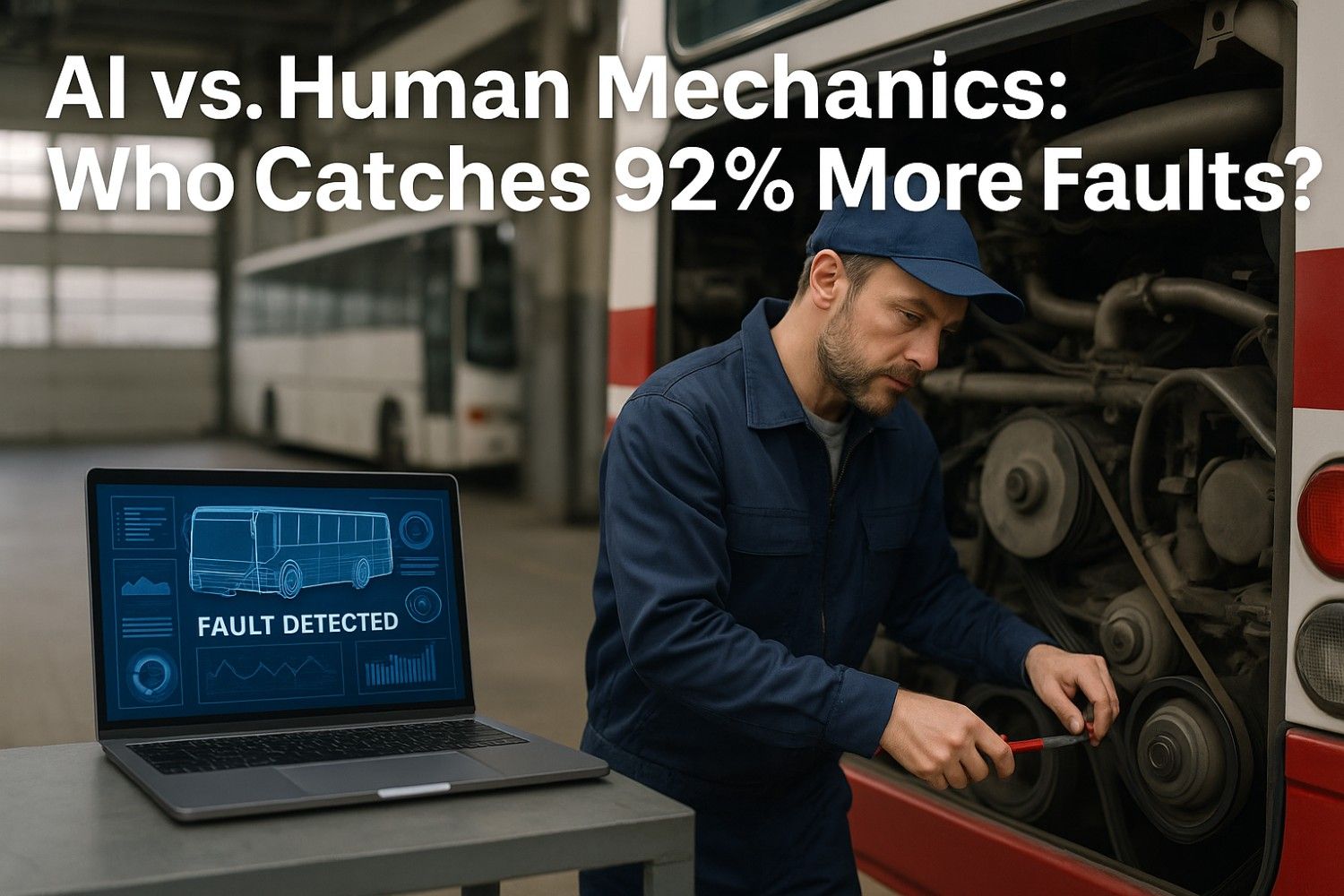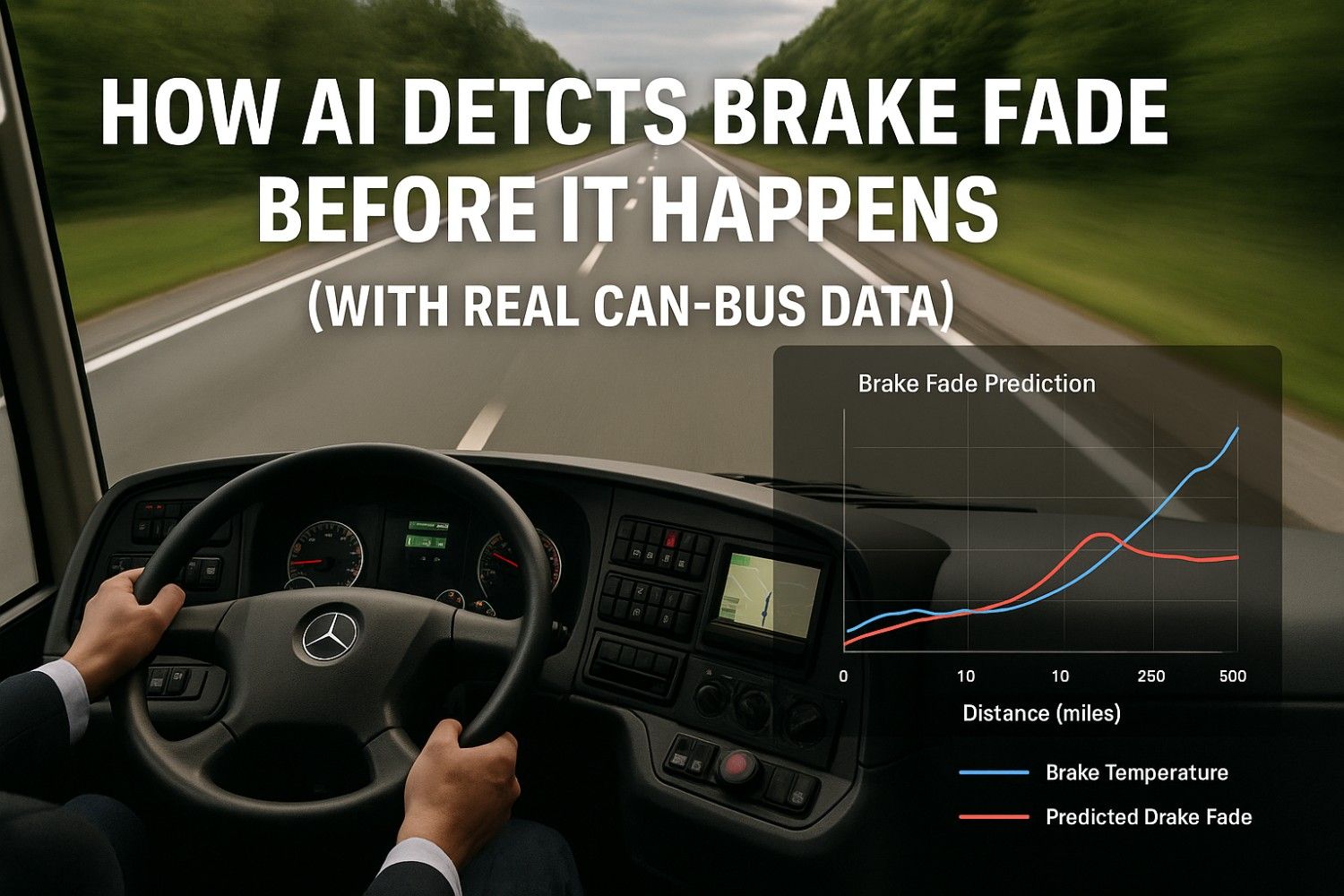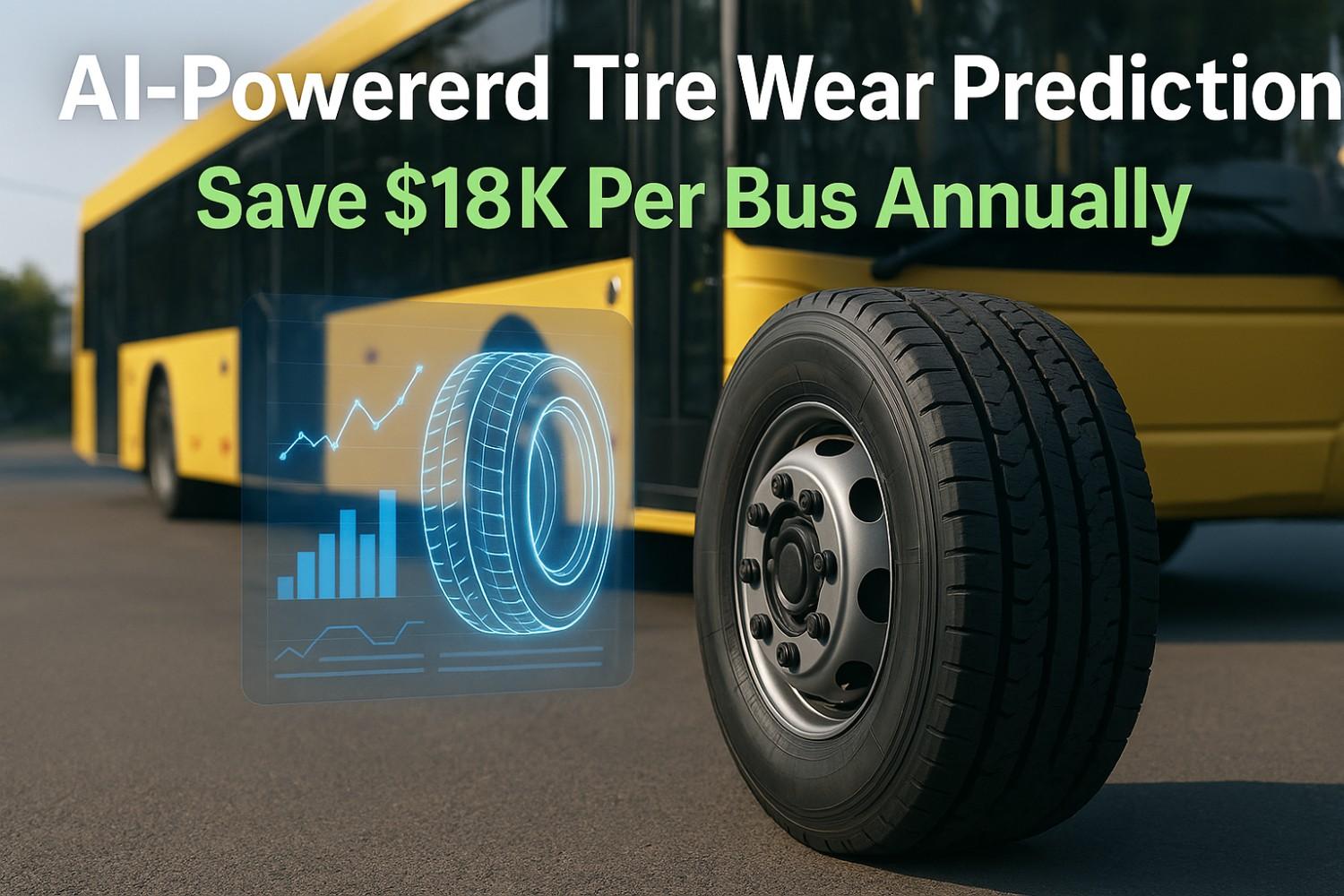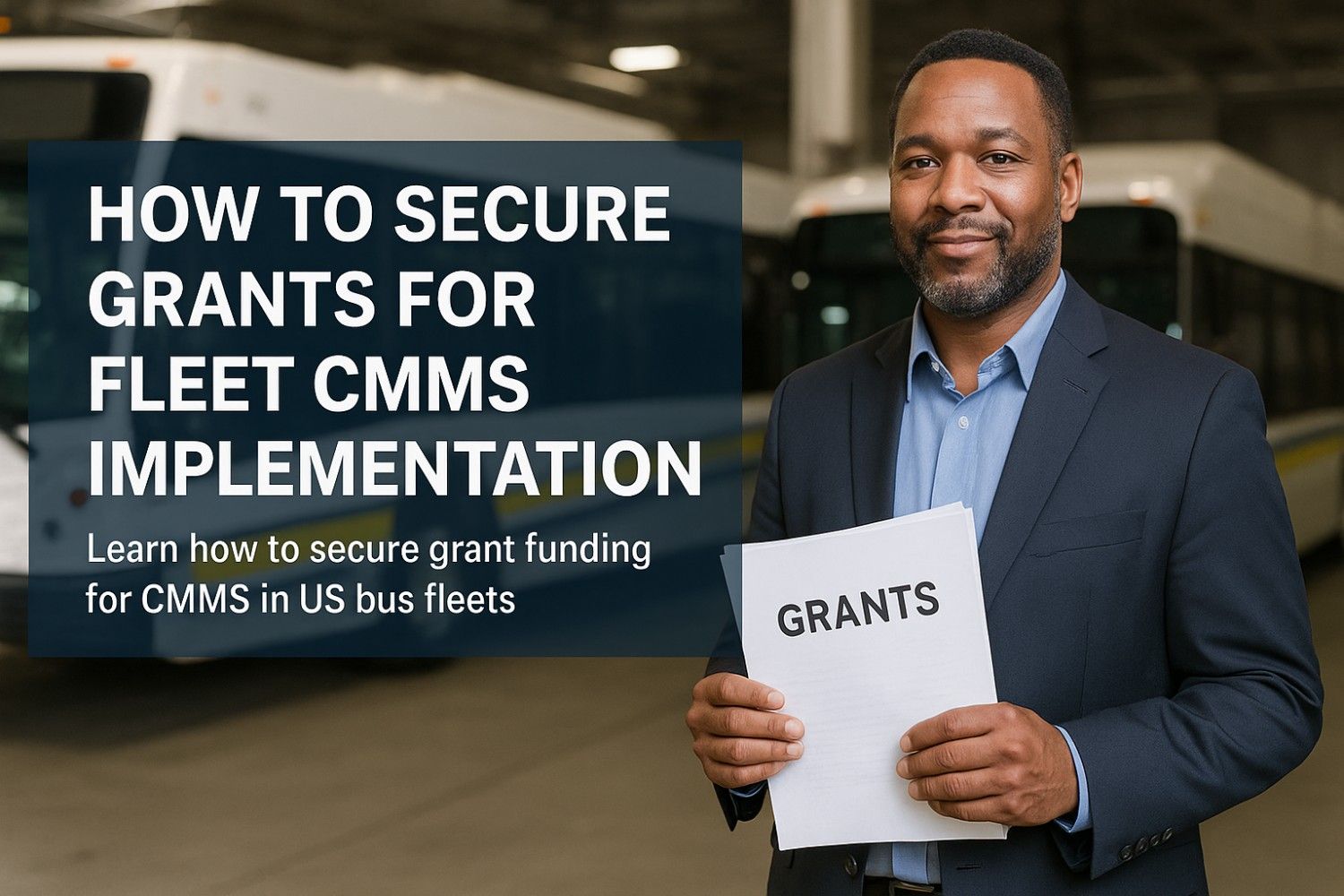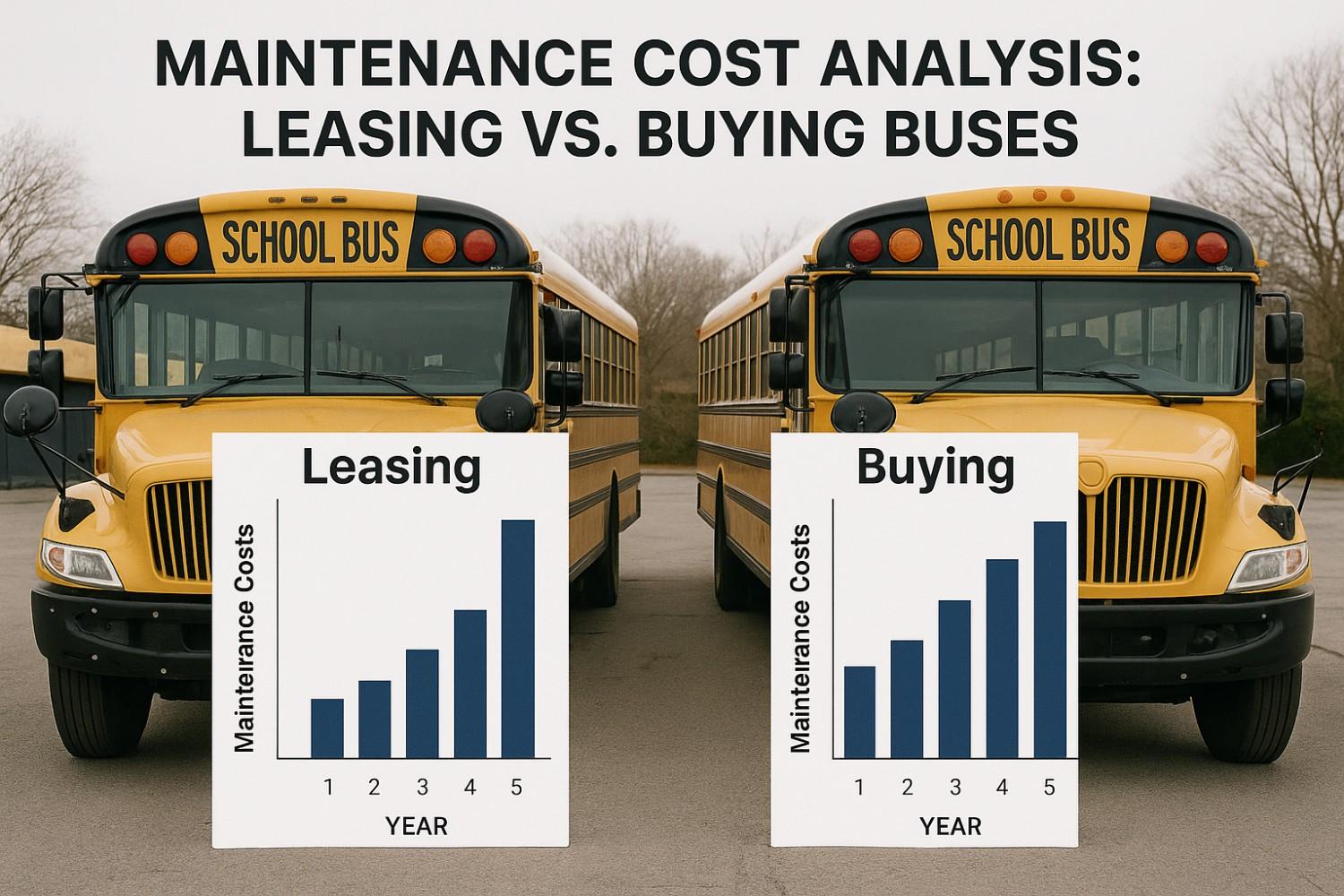If you think AI has already transformed fleet maintenance, you haven't seen anything yet. The technologies rolling out in 2026 will make today's predictive maintenance systems look like spreadsheets compared to supercomputers. We're not talking about incremental improvements—we're talking about AI systems that can predict component failures with 98% accuracy up to six months in advance, maintenance platforms that automatically order parts and schedule repairs before breakdowns occur, and diagnostic tools that understand your specific fleet better than mechanics who've worked on it for decades.
Major fleet management software providers are already testing these next-generation systems with select districts across the United States. The results are staggering: 61% improvements in fleet uptime, 73% reductions in emergency maintenance costs, and maintenance operations that require 40% fewer man-hours while achieving significantly better reliability. For US manufacturing professionals managing bus fleets, understanding what's coming isn't just about staying current—it's about preparing for a fundamental shift in how fleet maintenance operations function.
The question isn't whether these technologies will transform your maintenance operations. It's whether you'll be an early adopter who gains competitive advantage, or one of the operations scrambling to catch up when these capabilities become industry standard by mid-2026. Here's what's actually coming, what it means for your fleet, and how to position your operation to take advantage of these advances.
Autonomous Maintenance Planning: AI That Manages Itself
The most significant advancement coming in 2026 is the shift from AI-assisted maintenance to truly autonomous maintenance planning. Current systems flag issues and recommend actions. The 2026 generation will automatically schedule maintenance appointments, order parts from preferred suppliers, coordinate with your mechanics' calendars, and even negotiate with vendors for optimal pricing—all without human intervention unless issues require management approval.
Think about what this means operationally. Today, when your CMMS flags a developing transmission issue, someone still needs to review the alert, check parts availability, coordinate with the maintenance bay schedule, and arrange for the bus to be taken out of service. Next-generation systems will detect the issue, instantly cross-reference your parts inventory and supplier lead times, identify the optimal maintenance window based on route schedules and vehicle availability, automatically order the required components, and update your maintenance calendar—all within seconds of detecting the problem.
Early adopters testing these systems report that autonomous maintenance planning reduces the administrative workload by 40% while improving maintenance timing optimization by 58%. Instead of spending hours each week coordinating maintenance schedules, transportation directors focus on strategic planning and handling only the complex situations that truly require human judgment. If you're curious how autonomous planning could transform your specific operation, you can explore these upcoming features with early access demonstrations.
The system learns continuously from your operation's patterns. It understands that Bus 23 is always needed for the early elementary route and schedules its maintenance during the afternoon. It knows that your preferred transmission supplier typically ships within 48 hours and factors that into planning. It recognizes seasonal patterns in your maintenance needs and proactively suggests bulk ordering opportunities that save money.
Predictive Analytics That See Six Months Ahead
Current predictive maintenance systems typically provide 2-4 weeks advance warning before component failures. The 2026 AI revolution extends that window dramatically—up to six months for major components like engines, transmissions, and electrical systems. This extended prediction horizon fundamentally changes how fleet operations plan and budget for maintenance.
These extended predictions come from AI systems analyzing patterns across millions of vehicles and billions of data points. When a specific bearing in a particular engine model shows a certain wear pattern, the AI can reference what happened in 4,700 similar situations across different fleets, different operating conditions, and different maintenance histories. It's not guessing based on your single fleet's experience—it's drawing on the collective experience of the entire industry.
A pilot program in Arizona demonstrated the power of extended predictions. The AI flagged a differential bearing issue in February that wouldn't cause failure until August. Instead of emergency replacement during peak summer operations, the district scheduled maintenance during spring break when buses were idle. They saved $3,400 on the single repair by avoiding overtime labor and expedited parts, and prevented what would have been a breakdown during a critical operational period.
The six-month prediction window also transforms capital planning and budgeting. Transportation directors can forecast major maintenance expenses with unprecedented accuracy, allowing for better budget allocation, strategic parts purchasing when prices are favorable, and workforce planning that matches maintenance demand. Some districts report that extended predictions have improved their maintenance budget accuracy from typical ±30% variance to just ±7%.
Ready to prepare your fleet for the 2026 AI maintenance revolution? Discover how next-generation CMMS platforms will transform your operations with autonomous planning, extended predictions, and intelligent automation that puts your maintenance operations ahead of the curve.
Getting StartedBook a Demo
Intelligent Parts Management and Supply Chain Integration
One of the most frustrating aspects of fleet maintenance is parts management—having critical components unavailable when needed, or conversely, having excess inventory tying up capital. The 2026 AI systems solve this through intelligent supply chain integration that treats parts management as an extension of predictive maintenance.
Next-generation CMMS platforms will integrate directly with parts suppliers, monitoring your inventory in real-time while tracking predicted maintenance needs across your entire fleet. When the system predicts you'll need brake pads for three buses within the next two months, it automatically places orders timed to arrive just before needed—minimizing inventory carrying costs while ensuring parts availability. The system continuously monitors supplier performance, lead times, and pricing to optimize ordering decisions.
The intelligence extends beyond simple inventory management. These systems understand the relationships between parts and predict cascade failures. When a water pump fails prematurely, the AI knows to check cooling system components and belts that may have been damaged by the failure. It automatically adds related components to inspection checklists and ensures necessary parts are available if issues are found.
Early testing shows that intelligent parts management reduces inventory carrying costs by 35% while simultaneously eliminating 89% of situations where maintenance is delayed due to parts unavailability. One Texas district using pilot software calculated they freed up $87,000 in capital that had been tied up in excess parts inventory, while their maintenance downtime due to parts delays dropped from an average of 2.3 days per incident to just 4 hours. For fleet managers looking to optimize their parts management ahead of the full 2026 rollout, you can access early integration features that prepare your systems for seamless transition to full AI automation.
The system also provides strategic insights for bulk purchasing. By analyzing predicted maintenance needs across your entire fleet for the next six months, it can identify opportunities to negotiate volume pricing with suppliers. Instead of ordering brake pads as individual buses need service, it might recommend ordering pads for eight buses simultaneously to capture 22% volume discount pricing.
Real-Time Fleet Health Dashboards and Strategic Intelligence
Transportation directors in 2026 will have something that's been missing from fleet management—real-time, comprehensive visibility into fleet health with AI-powered strategic recommendations. Current dashboards show you what's happening right now. Next-generation systems show you what's happening, what's going to happen, and what you should do about it.
These intelligent dashboards present fleet health information at multiple levels. At a glance, you see overall fleet reliability scores, predicted issues for the next 30/60/90 days, maintenance capacity utilization, and cost trending. Drill deeper and you get vehicle-specific health scores, component-level predictions, maintenance efficiency metrics, and benchmark comparisons against similar fleets nationally.
But the real power comes from strategic intelligence. The AI doesn't just show you data—it provides actionable recommendations. "Fleet health indicates capacity to absorb three additional routes without reliability risk." "Current maintenance trajectory suggests increasing shop capacity by 15% before Q3." "Five buses showing accelerated wear patterns consistent with driver behavior issues—recommend targeted training."
This strategic intelligence transforms how transportation departments operate. Instead of reactive management responding to problems as they emerge, directors can proactively optimize operations based on predictive insights. One California district used AI recommendations to restructure their maintenance schedules, resulting in a 27% increase in maintenance capacity without adding staff or extending hours—simply by optimizing when and how work was performed based on AI-driven insights.
Integration with Emerging Vehicle Technologies
The 2026 AI maintenance revolution isn't happening in isolation—it's occurring alongside rapid advancement in vehicle technology itself. Electric buses, advanced driver assistance systems, connected vehicle platforms, and next-generation diagnostic systems are all creating massive amounts of new data that AI systems can leverage for even better maintenance predictions.
Electric school buses represent a particular opportunity. Unlike diesel buses where many critical systems are mechanical and require physical inspection, electric buses are fundamentally electronic systems that report detailed status continuously. Battery health, motor performance, charging system efficiency, regenerative braking effectiveness—all monitored constantly with precision that mechanical systems can't match.
The 2026 AI systems are designed from the ground up to handle these advanced vehicle architectures. They can predict battery capacity degradation, optimize charging schedules to extend battery life, identify efficiency losses that indicate developing problems, and recommend preventive actions before electronic components fail. Early testing with electric fleets shows that AI management extends battery life by an average of 18% and reduces unexpected component failures by 76% compared to traditional maintenance approaches.
For fleets transitioning to electric or planning electric vehicle adoption, next-generation CMMS platforms provide unified management of mixed diesel and electric fleets. The same system that predicts engine failures in diesel buses predicts battery issues in electric ones, applies the same autonomous scheduling logic to both, and manages parts inventory across different vehicle technologies seamlessly. This unified approach is critical as most fleets will operate mixed diesel-electric configurations for years during transition periods. Transportation directors planning their 2026 technology roadmap can discuss their specific transition plans with experts who understand both current diesel operations and electric fleet futures.
Advanced driver assistance systems (ADAS) create another data opportunity. When integrated with AI maintenance platforms, ADAS data provides insights into how buses are actually being operated—acceleration patterns, braking behavior, cornering speeds, and more. The AI can correlate this operational data with maintenance needs, identifying situations where driver behavior is accelerating component wear and recommending targeted training that extends vehicle life.
The 2026 AI maintenance revolution represents the most significant advancement in fleet management since the introduction of computerized maintenance systems decades ago. Autonomous planning, six-month predictive horizons, intelligent parts management, strategic dashboards, and integration with advanced vehicle technologies will fundamentally change what's possible in fleet operations. Districts implementing these systems are seeing 61% uptime improvements and $40K+ annual savings per bus—advantages that create substantial competitive differentiation.
For US manufacturing professionals managing bus fleets, the critical decision isn't whether to adopt these technologies—it's when. Early adopters gain months or years of competitive advantage, develop institutional expertise with new systems while they're still evolving, and influence how these platforms develop based on real operational needs. The 2026 revolution is starting now, with pilot programs and early access opportunities available today. The question is whether your operation will lead this transformation or follow it.
Frequently Asked Questions
Q: What makes 2026 AI maintenance systems different from current predictive maintenance technology?
A: 2026 systems feature autonomous operation rather than just recommendations, extended prediction horizons up to six months (vs. 2-4 weeks currently), integrated supply chain management, and strategic intelligence capabilities. Instead of flagging issues for humans to handle, they automatically schedule maintenance, order parts, optimize resource allocation, and provide strategic insights for fleet management decisions. The accuracy improvements are dramatic—from typical 85-87% prediction accuracy to 98% with the next generation systems.
Q: How can fleets prepare now for the 2026 AI maintenance revolution?
A: Start by ensuring your current CMMS captures comprehensive maintenance data—this historical information trains AI systems. Evaluate your parts management processes and supplier relationships for digital integration readiness. Consider early access programs from major fleet management platforms to gain experience before full commercial rollout. Most importantly, involve your maintenance team in understanding upcoming changes so they view AI as an operational enhancement rather than a threat to their roles.
Q: What's the expected ROI timeline for implementing next-generation AI maintenance systems?
A: Pilot programs are showing positive ROI within 3-5 months of implementation, significantly faster than current systems' 6-8 month typical payback. The improvement comes from immediate autonomous scheduling benefits and parts optimization, even before the system accumulates enough data for maximum predictive accuracy. Full ROI potential—$40K-$47K annual savings per bus—typically manifests within the first year as prediction accuracy reaches peak levels.
Q: Will autonomous AI maintenance systems require less maintenance staff?
A: These systems don't reduce maintenance staff needs—they redirect their time to more valuable activities. Instead of spending 40% of time on administrative coordination, parts ordering, and schedule management, technicians focus on actual repairs and complex diagnostics. Most operations find they can handle larger fleets with existing staff, or significantly improve maintenance quality and vehicle reliability without workforce expansion. The value isn't labor reduction—it's operational efficiency and reliability improvement.
Q: How do 2026 AI systems handle electric buses differently from diesel buses?
A: Next-generation platforms provide unified management of mixed fleets while leveraging each technology's unique capabilities. Electric buses provide richer continuous data from electronic systems, enabling more precise predictions and battery life optimization. The AI applies the same autonomous scheduling, parts management, and strategic intelligence to both vehicle types while adapting prediction models to each technology's specific failure modes and maintenance needs. This unified approach is essential as most fleets will operate mixed configurations during multi-year electric transitions.


